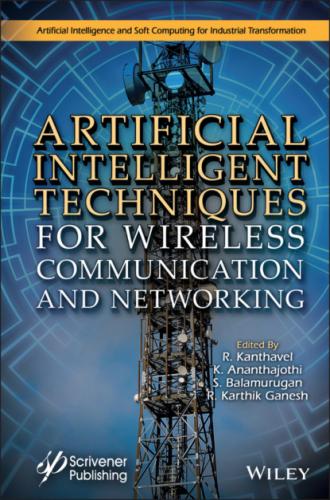12 Chapter 13Figure 13.1 Flying-ad hoc-networks.Figure 13.2 Multi-layer UAV ad hoc network [6].Figure 13.3 A group of five mobile node movements using the RPGM model [7].Figure 13.4 Data-centric routing.Figure 13.5 FANET augmented with a HAP station.Figure 13.6 Aerial vehicle network simulator integration.
13 Chapter 14Figure 14.1 Elements of logistics and supply chain.Figure 14.2 Transportation network model.Figure 14.3 Inventory routing problem.Figure 14.4 Inventory routing problem using JADE.Figure 14.5 Inventory routing problem using multi-agent model.Figure 14.6 Overview of reverse logistics.Figure 14.7 Elements of green supply chain.Figure 14.8 Healthcare supple chain network.Figure 14.9 Hospital outpatient simulation model.Figure 14.10 System Dynamic (SD) simulation model of replenishment quantity.Figure 14.11 Networked manufacturing of supply chain network.Figure 14.12 Humanitarian supply chain network.
14 Chapter 15Figure 15.1 Architecture of the proposed system.Figure 15.2 Decision tree derived with updated attributes.Figure 15.3 Formation of decision trees.Figure 15.4 Significant order dataset formation.Figure 15.5 Decision tree with hereditary factor.Figure 15.6 (a) Comparison of classifiers on proposed method vs ENORA vs NGSA. (...
15 Chapter 16Figure 16.1 Typical architecture of wireless mesh networks.Figure 16.2 Feedback frame format.Figure 16.3 Throughput comparison POR Vs conventional opportunistic routing prot...Figure 16.4 Packet loss ratio.Figure 16.5 Average transmit power—POR.Figure 16.6 Node test bed.
16 Chapter 17Figure 17.1 Characteristics, design principles and enabling technology defining ...Figure 17.2 New models, means, and forms of intelligent manufacturing.Figure 17.3 Four industrial revolutions.Figure 17.4 Several sub-problems in Artificial intelligence.Figure 17.5 Technical architecture of a typical knowledge graph [25].Figure 17.6 3DES structure.Figure 17.7 Framework of current and future works.
17 Chapter 18Figure 18.1 Evolution of 5G networks.Figure 18.2 5G network architecture.Figure 18.3 Applications of 5G.Figure 18.4 Requirements of 5G.Figure 18.5 AI and 5G technology.Figure 18.6 AI for RAN optimization.Figure 18.7 Integrated Access Backhaul (IAB).Figure 18.8 Research challenges identified in 5G network.Figure 18.9 Recurrent neural network (RNN) model for traffic prediction.Figure 18.10 3D CNN model for traffic prediction.Figure 18.11 RNN and 3D CNN combined model for traffic prediction.Figure 18.12 The hyper parameters for RNN and 3D-CNN.
18 Chapter 20Figure 20.1 The cognitive radio concept architecture.Figure 20.2 A simple Artificial Neural Network.Figure 20.3 Some uses of the Internet of Things.Figure 20.4 SDN architecture.
Guide
1 Cover
5 Preface
7 Index
Pages
1 v
2 ii
3 iii
4 iv
5 xvii
6 xviii
7 xix
8 xx
9 xxi
10 xxii
11 1
12 2
13 3
14 4
15 5
16 6
17 7
18 8
19 9
20 10
21 11
22 12
23 13
24 14
25 15
26 16
27 17
28 18
29 19
30 20
31 21
32 22
33 23
34 24
35 25
36
